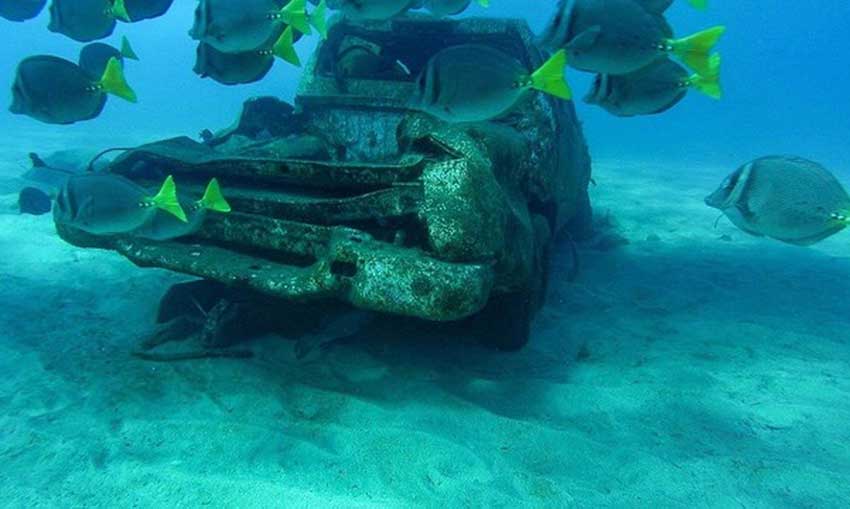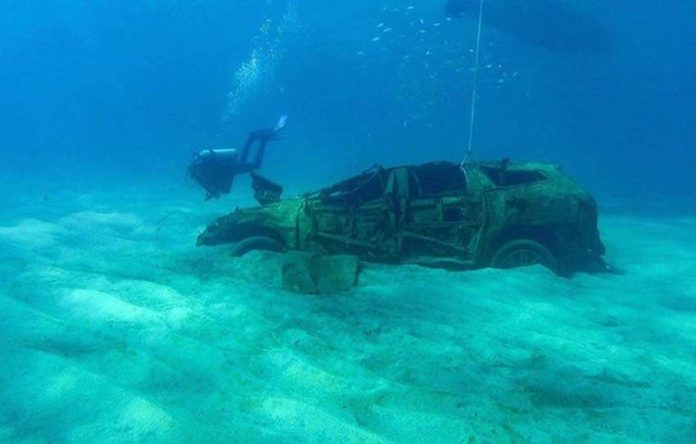As many as 1,000 tires and eight vehicles are among tonnes of garbage lying beneath the surface of the ocean off the coast of Cabo San Lucas in Baja California Sur.
But an ambitious clean-up program is aiming to remove most of the refuse to avoid damage to the marine environment, although the cars appear likely to stay.
Hurricane Odile in 2014 and tropical storm Lidia in 2017 swept large quantities of rubbish into the Cabo San Lucas bay via the Salto Seco arroyo, including steel structures, refrigerators, stoves, gas tanks and PVC pipe.
Now, the Natural Protected Areas Commission (Conanp), in coordination with the local diving association, the municipal government and the Secretariat of the Navy (Semar), intends to remove the garbage before it degrades and contaminates the sea off the southern tip of the Baja California peninsula.
Since the middle of last month, divers have been working every Sunday to extract the unwanted objects from the seabed while authorities and volunteers have been picking up trash strewn along the shoreline.

Miguel Alighieri, a diver and president of the advisory council for the Cabo San Lucas Protected Area (APFF), told the newspaper Milenio that some garbage has already been removed but a lot more still remains.
“More than 30 divers and boats from different companies are helping us to remove what’s left from tropical storm Lidia . . . We still have a large number of tires, we estimate that there are between 500 and 1,000 still under the water,” he said.
Alighieri explained that some of the estimated eight cars lying on the seabed have become artificial reefs and most likely won’t be removed due to the difficulty of doing so, and because they don’t pose a contamination risk or a threat to boats.
“It’s probable that [removing them] won’t be necessary because they’re not at sea level, they’re [at depths of] between 10 and 30 meters . . .” he said.
María Josué Navarro Sánchez, a Conanp deputy director responsible for the Cabo San Lucas AFFF, said that clean-up efforts have so far focused on Playa Médano, the most popular beach in the resort city.
She said the objective of the operation is to get the garbage out of the water before it degrades or drifts to other parts of the bay. Navarro also highlighted the danger the trash poses to marine life.
“There are a lot of animals that confuse these particles [with food] and they can eat them . . . Pieces of plastic have been found in the digestive tracts of fish, birds and mammals,” she said.
“. . . That’s why it’s important to maintain our ecosystem clean, not so much for tourism activities but because of the collateral [environmental] damage . . .” Navarro added.
The Conanp official stressed that even if the clean-up program is successful in removing most or all of the garbage from the water, that won’t be the end of the pollution problem because people are continuing to use normally dried-up stream beds as a dump for their garbage. When there is a storm, Navarro explained, the waste is carried to the sea.
She said that authorities are working to raise awareness of the problems that are generated by the disposal of trash upstream and stressed the importance of protecting the environment of the Cabo San Lucas Protected Area because it is the “economic livelihood” of the majority of the city’s population.
Source: Milenio (sp)
